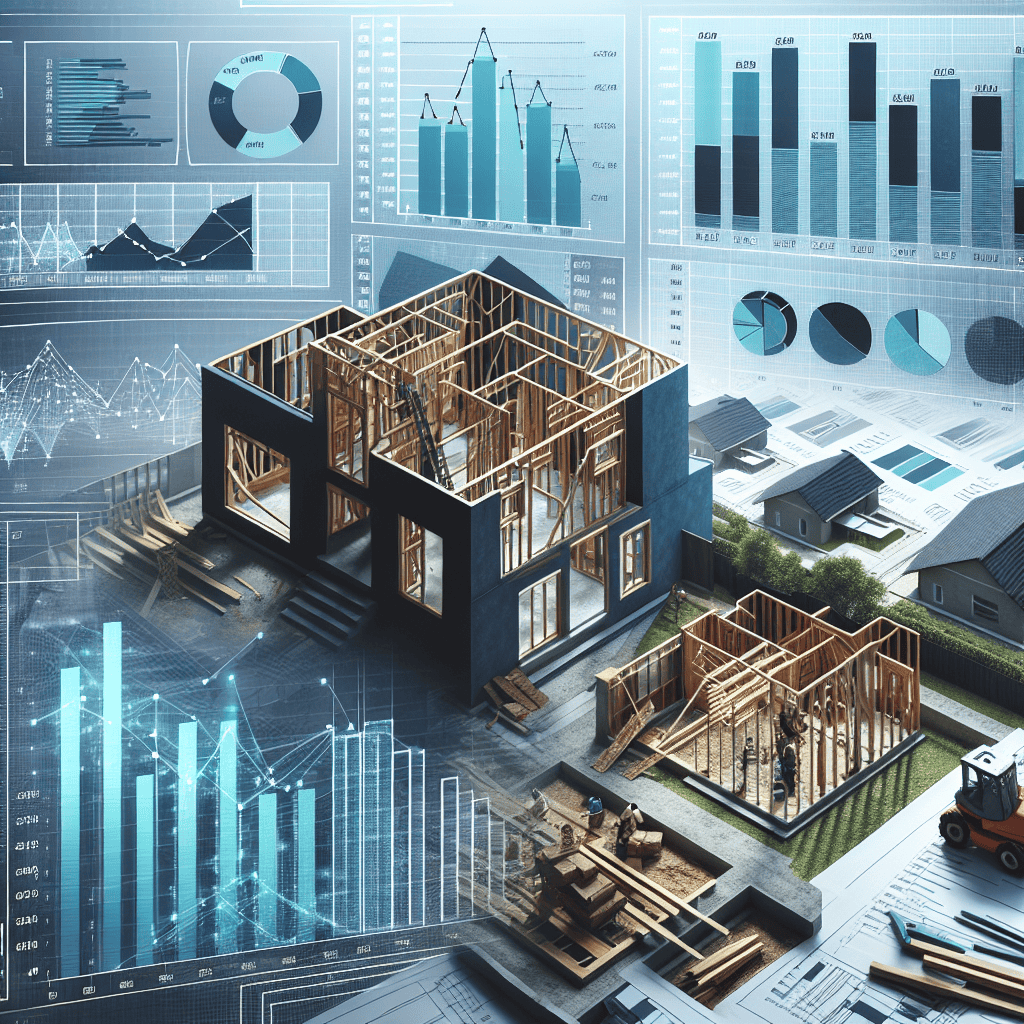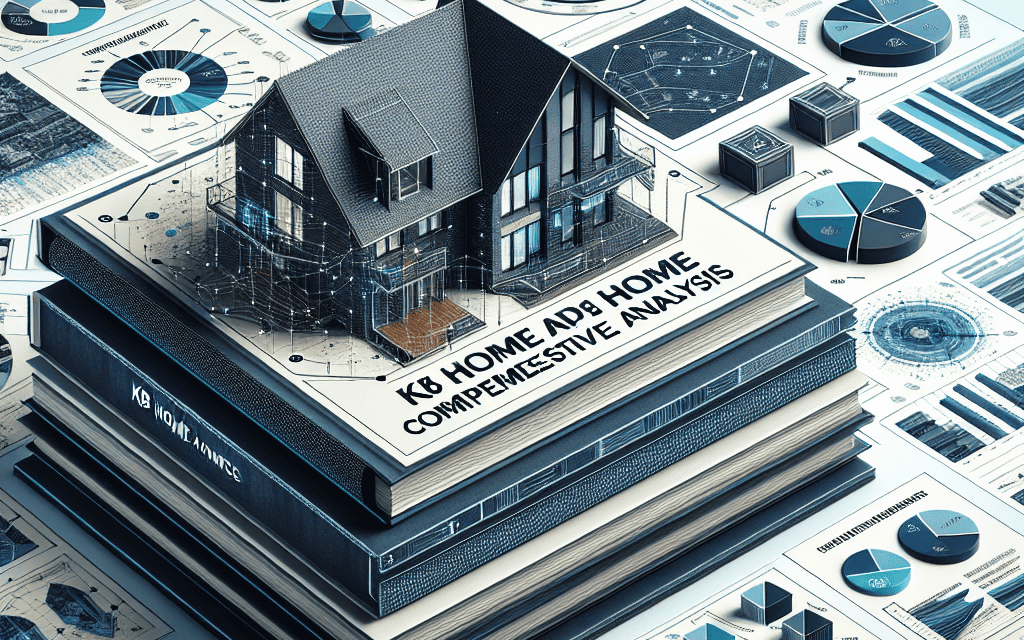“Unveiling Insights: The Comprehensive KB Home Report”
Introduction
The “In-Depth Analysis: KB Home Report” provides a comprehensive examination of KB Home, one of the leading homebuilding companies in the United States. This report delves into various aspects of the company’s operations, financial performance, market strategies, and competitive positioning within the residential construction industry. By analyzing key metrics, market trends, and strategic initiatives, the report aims to offer valuable insights into KB Home’s business model and its adaptability in a dynamic real estate market. Additionally, it explores the company’s response to economic fluctuations, regulatory changes, and evolving consumer preferences, providing a holistic view of its potential for future growth and sustainability.
Understanding KB Home’s Financial Performance: A Comprehensive Review
In the realm of residential construction, KB Home stands as a significant player, consistently demonstrating its prowess in the housing market. To understand KB Home’s financial performance, it is essential to delve into various aspects of its operations, including revenue streams, market strategies, and economic influences. By examining these elements, one can gain a comprehensive view of the company’s financial health and strategic positioning.
Firstly, KB Home’s revenue generation is primarily driven by its core business of constructing and selling homes. The company’s financial reports indicate a steady increase in revenue over recent years, attributed to a robust demand for housing and strategic expansion into high-growth markets. This growth is further supported by KB Home’s focus on offering a diverse range of home designs and price points, catering to a broad spectrum of buyers. By doing so, the company effectively captures a larger market share, enhancing its revenue potential.
Moreover, KB Home’s financial performance is closely tied to its ability to manage costs and maintain profitability. The company has implemented various cost-control measures, such as optimizing supply chain operations and leveraging economies of scale. These efforts have resulted in improved profit margins, even amidst fluctuating material costs and labor shortages. Additionally, KB Home’s strategic land acquisition practices play a crucial role in its financial success. By securing land in desirable locations at competitive prices, the company ensures a steady pipeline of projects, which is vital for sustaining long-term growth.
Transitioning to the broader economic context, the housing market’s dynamics significantly impact KB Home’s financial performance. Interest rates, for instance, are a critical factor influencing homebuyer affordability and demand. In periods of low interest rates, potential homeowners are more likely to enter the market, boosting sales for homebuilders like KB Home. Conversely, rising interest rates can dampen demand, posing challenges to maintaining sales momentum. Therefore, KB Home’s financial strategies must be adaptable to these economic fluctuations to mitigate potential risks.
Furthermore, KB Home’s commitment to sustainability and innovation is another aspect that contributes to its financial performance. The company has embraced energy-efficient building practices and sustainable materials, aligning with the growing consumer preference for environmentally friendly homes. This not only enhances the company’s brand reputation but also opens up opportunities for cost savings and potential incentives. By integrating these practices into its operations, KB Home positions itself as a forward-thinking leader in the industry, which can translate into financial benefits.
In addition to these factors, KB Home’s financial performance is also influenced by its customer-centric approach. The company places a strong emphasis on customer satisfaction, offering personalized homebuying experiences and post-sale support. This focus on customer service fosters brand loyalty and generates positive word-of-mouth, which can lead to repeat business and referrals. As a result, KB Home can maintain a steady stream of revenue while building a strong community presence.
In conclusion, understanding KB Home’s financial performance requires a multifaceted analysis of its revenue strategies, cost management, market conditions, and commitment to innovation and customer satisfaction. By effectively navigating these areas, KB Home has established itself as a resilient and adaptable entity in the competitive housing market. As the company continues to evolve, its ability to respond to economic changes and consumer preferences will be crucial in sustaining its financial success and market leadership.
Key Market Trends Impacting KB Home’s Growth
In the ever-evolving landscape of the real estate market, KB Home, a prominent player in the homebuilding industry, has been navigating a series of key market trends that significantly impact its growth trajectory. As we delve into these trends, it becomes evident that a confluence of economic, demographic, and technological factors is shaping the company’s strategic decisions and operational dynamics.
To begin with, the economic environment plays a crucial role in influencing KB Home’s growth. Interest rates, for instance, have a direct impact on the affordability of homes. In recent years, fluctuating interest rates have created a dynamic market environment. When rates are low, potential homeowners are more inclined to purchase, thereby boosting demand for new homes. Conversely, rising interest rates can dampen this enthusiasm, as higher borrowing costs may deter potential buyers. KB Home, like many of its peers, must remain agile, adjusting its pricing strategies and financing options to align with these economic shifts.
Moreover, demographic trends are equally pivotal in shaping KB Home’s market strategy. The millennial generation, now entering its prime home-buying years, represents a significant portion of the market. This cohort tends to prioritize sustainability, technology integration, and community-oriented living spaces. KB Home has responded by incorporating energy-efficient designs and smart home technologies into its offerings, thereby appealing to environmentally conscious and tech-savvy buyers. Additionally, the company has focused on developing communities that foster a sense of belonging, catering to the millennials’ preference for connected living environments.
In parallel, the rise of remote work has introduced new dynamics into the housing market. As more individuals and families embrace flexible work arrangements, there is an increasing demand for homes that accommodate home offices and offer greater living space. This trend has prompted KB Home to innovate its floor plans, ensuring that they meet the evolving needs of modern homeowners. By offering versatile spaces that can be adapted for work, leisure, and family activities, the company positions itself to capture a broader segment of the market.
Furthermore, technological advancements are reshaping the homebuilding industry, and KB Home is at the forefront of leveraging these innovations. The integration of digital tools in the design and construction processes has enhanced efficiency and precision, allowing for faster project completion and reduced costs. Virtual reality and augmented reality technologies are also being utilized to provide potential buyers with immersive experiences, enabling them to visualize their future homes before construction even begins. This not only enhances customer engagement but also streamlines the decision-making process.
In addition to these factors, sustainability remains a critical consideration for KB Home. As environmental concerns continue to gain prominence, the company has committed to sustainable building practices. By utilizing eco-friendly materials and implementing energy-efficient systems, KB Home not only reduces its environmental footprint but also meets the growing demand for green homes. This commitment to sustainability not only aligns with regulatory requirements but also enhances the company’s brand reputation, attracting environmentally conscious buyers.
In conclusion, KB Home’s growth is intricately linked to a myriad of market trends that encompass economic conditions, demographic shifts, technological advancements, and sustainability imperatives. By strategically navigating these trends, the company is well-positioned to capitalize on emerging opportunities and address potential challenges. As the real estate market continues to evolve, KB Home’s ability to adapt and innovate will be crucial in sustaining its growth and maintaining its competitive edge.
Analyzing KB Home’s Strategic Initiatives for Future Expansion
In the ever-evolving landscape of the real estate industry, KB Home has consistently demonstrated a keen ability to adapt and thrive. As one of the largest homebuilders in the United States, the company has strategically positioned itself to capitalize on emerging trends and market demands. A closer examination of KB Home’s strategic initiatives reveals a multifaceted approach aimed at ensuring sustainable growth and expansion in the coming years.
To begin with, KB Home has placed a significant emphasis on innovation and sustainability, recognizing the growing consumer demand for environmentally friendly and energy-efficient homes. The company has integrated advanced building techniques and materials that not only reduce the carbon footprint of their homes but also offer long-term cost savings to homeowners. By incorporating features such as solar power systems, energy-efficient appliances, and smart home technology, KB Home is not only meeting current market expectations but also setting a benchmark for the industry. This commitment to sustainability is further underscored by their participation in the Environmental Protection Agency’s ENERGY STAR program, which highlights their dedication to building homes that are both energy-efficient and environmentally responsible.
In addition to their focus on sustainability, KB Home has also been proactive in expanding their geographic footprint. By strategically entering new markets and strengthening their presence in existing ones, the company is poised to capture a larger share of the housing market. This expansion is not merely about increasing the number of homes built but also about understanding and catering to the unique needs of different regions. By conducting thorough market research and analysis, KB Home is able to tailor their offerings to align with local preferences and economic conditions, thereby enhancing their appeal to a broader customer base.
Moreover, KB Home’s strategic initiatives are deeply rooted in their customer-centric approach. The company has consistently prioritized customer satisfaction by offering a high degree of personalization in their home designs. Prospective homeowners are given the opportunity to customize various aspects of their homes, from floor plans to finishes, ensuring that each home is a reflection of the buyer’s personal style and needs. This level of customization not only enhances customer satisfaction but also differentiates KB Home from competitors who may offer more standardized options.
Furthermore, KB Home has embraced digital transformation as a key component of their strategic initiatives. By leveraging technology, the company has streamlined their operations and improved the overall customer experience. From virtual home tours to online design studios, KB Home has made it easier for potential buyers to explore and personalize their future homes from the comfort of their own devices. This digital-first approach not only caters to the tech-savvy consumer but also positions KB Home as a forward-thinking leader in the industry.
In conclusion, KB Home’s strategic initiatives for future expansion are characterized by a strong commitment to sustainability, geographic diversification, customer-centricity, and digital innovation. By focusing on these key areas, the company is well-equipped to navigate the challenges of the real estate market and capitalize on new opportunities. As KB Home continues to implement these strategies, they are likely to maintain their competitive edge and achieve sustained growth in the years to come.
The Role of Sustainability in KB Home’s Business Model

In recent years, the construction and real estate industries have increasingly embraced sustainability as a core component of their business models. Among the companies leading this charge is KB Home, a prominent homebuilder in the United States. The role of sustainability in KB Home’s business model is not merely a response to regulatory pressures or market trends; rather, it is a strategic approach that aligns with the company’s long-term vision and operational goals. By integrating sustainable practices into its operations, KB Home not only addresses environmental concerns but also enhances its competitive edge in the marketplace.
To begin with, KB Home’s commitment to sustainability is evident in its approach to energy efficiency. The company has consistently prioritized the construction of energy-efficient homes, which are designed to reduce energy consumption and lower utility bills for homeowners. This focus on energy efficiency is achieved through the use of advanced building techniques and materials, such as high-performance insulation, energy-efficient windows, and state-of-the-art heating and cooling systems. By doing so, KB Home not only meets but often exceeds the standards set by the U.S. Environmental Protection Agency’s ENERGY STAR program. This commitment to energy efficiency not only benefits the environment by reducing greenhouse gas emissions but also provides tangible financial savings for homeowners, thereby enhancing the overall value proposition of KB Home’s offerings.
Moreover, KB Home’s sustainability initiatives extend beyond energy efficiency to encompass water conservation. Recognizing the growing importance of water stewardship, particularly in regions prone to drought, the company has implemented a range of water-saving features in its homes. These include low-flow plumbing fixtures, drought-tolerant landscaping, and smart irrigation systems that optimize water usage. By incorporating these features, KB Home not only contributes to the conservation of a vital natural resource but also positions itself as a forward-thinking leader in sustainable homebuilding.
In addition to energy and water conservation, KB Home places a strong emphasis on the use of sustainable building materials. The company actively seeks out materials that are sourced responsibly and have a lower environmental impact. This includes the use of recycled materials, sustainably harvested wood, and low-VOC (volatile organic compound) paints and finishes. By prioritizing sustainable materials, KB Home reduces the ecological footprint of its construction processes and promotes healthier indoor environments for its customers.
Furthermore, KB Home’s sustainability efforts are supported by a robust framework of corporate governance and stakeholder engagement. The company regularly publishes sustainability reports that detail its progress and achievements in various environmental, social, and governance (ESG) areas. These reports not only provide transparency to investors and customers but also serve as a tool for continuous improvement. By engaging with stakeholders, including suppliers, regulators, and community organizations, KB Home ensures that its sustainability initiatives are aligned with broader societal goals and expectations.
In conclusion, sustainability is a fundamental aspect of KB Home’s business model, driving innovation and differentiation in a competitive industry. Through its comprehensive approach to energy efficiency, water conservation, sustainable materials, and stakeholder engagement, KB Home demonstrates that sustainability is not just an add-on but an integral part of its corporate strategy. As the demand for sustainable living solutions continues to grow, KB Home’s commitment to sustainability positions it well to meet the evolving needs of its customers and contribute positively to the environment.
Evaluating KB Home’s Competitive Position in the Housing Market
In evaluating KB Home’s competitive position in the housing market, it is essential to consider several key factors that contribute to its standing among industry peers. As one of the largest homebuilders in the United States, KB Home has established a significant presence in the residential construction sector. This analysis will explore the company’s strategic initiatives, market positioning, and financial performance to provide a comprehensive understanding of its competitive edge.
To begin with, KB Home’s strategic focus on sustainability and energy efficiency has set it apart from many competitors. The company has been a pioneer in incorporating energy-efficient features into its homes, which not only appeals to environmentally conscious consumers but also aligns with broader industry trends towards sustainable building practices. By offering homes that meet Energy Star certification and other green building standards, KB Home has positioned itself as a leader in this niche market. This commitment to sustainability not only enhances the company’s brand reputation but also provides a competitive advantage as more homebuyers prioritize eco-friendly living.
Moreover, KB Home’s customer-centric approach further strengthens its competitive position. The company offers a unique homebuying experience through its Built-to-Order model, which allows customers to personalize their homes according to their preferences and budget. This level of customization is a significant differentiator in the housing market, where many competitors offer limited options. By empowering buyers to make choices about floor plans, design features, and finishes, KB Home enhances customer satisfaction and loyalty, which are crucial for long-term success.
In addition to its strategic initiatives, KB Home’s market positioning is bolstered by its geographic diversification. The company operates in several key housing markets across the United States, including California, Texas, and Florida, which are known for their robust demand for new homes. This geographic spread not only mitigates risks associated with regional economic fluctuations but also allows KB Home to capitalize on growth opportunities in high-demand areas. By maintaining a balanced portfolio across different markets, the company can adapt to changing market conditions and sustain its competitive edge.
Financial performance is another critical aspect of KB Home’s competitive position. The company has demonstrated strong financial health, with consistent revenue growth and profitability. This financial stability enables KB Home to invest in land acquisition, development projects, and innovative technologies, further enhancing its market position. Additionally, a solid balance sheet provides the company with the flexibility to navigate economic downturns and capitalize on emerging opportunities, ensuring its resilience in a competitive industry.
Furthermore, KB Home’s commitment to innovation and technology adoption plays a vital role in maintaining its competitive advantage. The company has embraced digital tools and platforms to streamline operations, enhance customer engagement, and improve construction efficiency. By leveraging technology, KB Home can reduce costs, accelerate project timelines, and deliver a superior homebuying experience. This focus on innovation not only improves operational efficiency but also positions the company as a forward-thinking leader in the housing market.
In conclusion, KB Home’s competitive position in the housing market is underpinned by its strategic focus on sustainability, customer-centric approach, geographic diversification, strong financial performance, and commitment to innovation. These factors collectively contribute to the company’s ability to differentiate itself from competitors and maintain a strong presence in the industry. As the housing market continues to evolve, KB Home’s strategic initiatives and adaptability will be crucial in sustaining its competitive edge and driving future growth.
Consumer Preferences and Their Influence on KB Home’s Product Offerings
In recent years, consumer preferences have increasingly shaped the landscape of the housing market, compelling builders like KB Home to adapt their product offerings to meet evolving demands. As one of the largest homebuilders in the United States, KB Home has demonstrated a keen awareness of these shifting preferences, which are influenced by a variety of factors including technological advancements, environmental concerns, and changing demographics. By analyzing these trends, we can gain a deeper understanding of how KB Home has strategically aligned its offerings to cater to the modern homebuyer.
To begin with, the integration of smart home technology has become a significant factor in consumer decision-making. Homebuyers today are more tech-savvy than ever, seeking homes that offer convenience, security, and energy efficiency through advanced technology. Recognizing this trend, KB Home has incorporated smart home features as standard in many of its new builds. These features often include smart thermostats, security systems, and energy-efficient appliances, which not only appeal to tech-oriented buyers but also align with broader environmental concerns.
Speaking of environmental considerations, sustainability has emerged as a critical component of consumer preferences. With growing awareness of climate change and its impacts, many homebuyers are prioritizing eco-friendly living spaces. KB Home has responded to this demand by emphasizing energy-efficient construction practices and materials. The company’s commitment to sustainability is evident in its Energy Star-certified homes, which are designed to reduce energy consumption and lower utility bills. This focus not only attracts environmentally conscious buyers but also positions KB Home as a leader in sustainable building practices.
Moreover, demographic shifts have played a pivotal role in shaping consumer preferences. The rise of millennials as a dominant force in the housing market has introduced new priorities, such as affordability and flexibility. Millennials often seek homes that offer a balance between cost and quality, with a preference for open floor plans and multifunctional spaces that can adapt to their changing needs. In response, KB Home has diversified its product offerings to include a range of price points and customizable options, allowing buyers to tailor their homes to fit their lifestyles and budgets.
In addition to millennials, the aging baby boomer population has also influenced KB Home’s product strategy. As many boomers look to downsize or move into homes that accommodate aging in place, there is a growing demand for single-story homes and communities with amenities that support an active lifestyle. KB Home has addressed this by developing communities that offer a variety of floor plans and features designed to appeal to older adults, such as wider doorways, step-free entrances, and proximity to healthcare facilities.
Furthermore, the COVID-19 pandemic has accelerated certain consumer trends, particularly the desire for homes that support remote work and offer outdoor living spaces. With more people working from home, there is an increased demand for dedicated office spaces and high-speed internet connectivity. Additionally, the importance of outdoor areas for recreation and relaxation has grown, prompting KB Home to incorporate features such as patios, balconies, and community parks into their designs.
In conclusion, consumer preferences have a profound influence on KB Home’s product offerings, driving the company to innovate and adapt in response to technological, environmental, and demographic trends. By staying attuned to these preferences, KB Home not only meets the needs of today’s homebuyers but also positions itself for continued success in a dynamic housing market. Through strategic alignment with consumer demands, KB Home exemplifies how homebuilders can thrive by embracing change and prioritizing the desires of their customers.
The Impact of Economic Factors on KB Home’s Business Operations
In analyzing the impact of economic factors on KB Home’s business operations, it is essential to consider the multifaceted nature of the housing market and the broader economic environment. As one of the largest homebuilders in the United States, KB Home is significantly influenced by economic indicators such as interest rates, employment levels, and consumer confidence. These factors collectively shape the demand for new homes, which in turn affects the company’s sales and profitability.
To begin with, interest rates play a crucial role in the housing market. When interest rates are low, borrowing costs decrease, making mortgages more affordable for potential homebuyers. This typically leads to an increase in demand for new homes, benefiting homebuilders like KB Home. Conversely, when interest rates rise, borrowing becomes more expensive, potentially dampening the enthusiasm of prospective buyers. In recent years, fluctuations in interest rates have posed both opportunities and challenges for KB Home. The company has had to strategically navigate these changes to maintain its competitive edge and ensure steady growth.
Moreover, employment levels are another critical economic factor impacting KB Home’s operations. A robust job market generally leads to higher disposable income and greater financial security for individuals, which can boost the demand for housing. When employment rates are high, more people are likely to consider purchasing a home, thereby driving up sales for homebuilders. However, during periods of economic downturns or high unemployment, consumer spending tends to decline, and the housing market may experience a slowdown. KB Home must continuously monitor employment trends to adjust its business strategies accordingly, ensuring that it remains resilient in the face of economic uncertainties.
In addition to interest rates and employment levels, consumer confidence is a vital determinant of housing market dynamics. Consumer confidence reflects the overall sentiment of individuals regarding their financial situation and the economy’s future. When confidence is high, people are more likely to make significant financial commitments, such as buying a home. On the other hand, when confidence wanes, potential buyers may postpone or cancel their plans to purchase a new home. KB Home’s ability to gauge consumer sentiment and adapt its marketing and sales strategies is crucial for sustaining its market position.
Furthermore, the cost of raw materials and labor can significantly impact KB Home’s operational efficiency and profitability. Fluctuations in the prices of essential building materials, such as lumber and steel, can affect the company’s cost structure. Additionally, labor shortages or wage increases can lead to higher construction costs, which may be passed on to consumers in the form of higher home prices. KB Home must effectively manage its supply chain and labor resources to mitigate these risks and maintain competitive pricing.
In conclusion, the interplay of interest rates, employment levels, consumer confidence, and cost factors creates a complex economic landscape that KB Home must navigate to succeed. By closely monitoring these economic indicators and adapting its business strategies accordingly, KB Home can continue to thrive in a dynamic market environment. The company’s ability to anticipate and respond to economic changes will be instrumental in shaping its future growth and success. As such, understanding the impact of these economic factors is essential for stakeholders and investors seeking to evaluate KB Home’s business operations and long-term prospects.
Q&A
1. **What is KB Home?**
KB Home is a well-known American homebuilding company that constructs and sells homes, primarily targeting first-time and move-up homebuyers.
2. **What does the KB Home report typically include?**
The KB Home report usually includes financial performance metrics, such as revenue, net income, and earnings per share, as well as operational data like the number of homes delivered, average selling price, and backlog.
3. **How does KB Home’s financial performance impact its stock price?**
Strong financial performance, such as increased revenue and profit margins, can lead to a rise in KB Home’s stock price, while weaker-than-expected results may cause the stock to decline.
4. **What are some key factors influencing KB Home’s business?**
Key factors include housing market conditions, interest rates, consumer confidence, land acquisition costs, and regulatory changes affecting the construction industry.
5. **How does KB Home address sustainability in its operations?**
KB Home focuses on sustainability by incorporating energy-efficient features in its homes, using sustainable building materials, and implementing water conservation practices.
6. **What challenges does KB Home face in the current market?**
Challenges include fluctuating interest rates, supply chain disruptions, labor shortages, and potential changes in housing demand due to economic conditions.
7. **What strategies does KB Home employ to maintain competitiveness?**
KB Home employs strategies such as diversifying its geographic presence, offering customizable home designs, leveraging technology for efficient construction, and maintaining strong customer service to enhance its market position.
Conclusion
The in-depth analysis of the KB Home report reveals a comprehensive overview of the company’s financial performance, market position, and strategic initiatives. The report highlights KB Home’s strong revenue growth driven by increased home sales and effective cost management. It also underscores the company’s focus on sustainability and innovation in homebuilding, which positions it well in a competitive market. However, challenges such as fluctuating material costs and potential economic downturns remain. Overall, KB Home demonstrates resilience and adaptability, suggesting a positive outlook for future growth and profitability.





